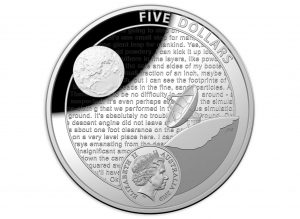Aug 5, 2019 | commemorative, commentary, legislative, news
 Congress is nothing if not full of shallow people who would pander to their own mothers if it meant winning a vote or two. Their shallowness is on display just before they go on an extended break when members drop bills into the virtual hopper for consideration.
Congress is nothing if not full of shallow people who would pander to their own mothers if it meant winning a vote or two. Their shallowness is on display just before they go on an extended break when members drop bills into the virtual hopper for consideration.
In the old days, members of Congress would write have the bills printed on paper and dropped into a physical hopper. The Clerk of the House would empty the hopper and enter new bills into the Congressional Record and add it to the calendar. The bills are sent to the Government Printing Office (GPO) for publications. Nowadays, the hopper is virtual. The submittal process is all by the press of the button — however, the still prints the bills and the Congressional Record causing delays in reporting.
Members of Congress know this and can milk a story for days while they travel back to their districts for their summer break.
It is excellent public relations for these people whose approval rating is lower than drain cleaner. So in between the bills to rename Post Offices, federal buildings, and sections of highway are bills to create commemorative coins. Congress gets a nice writeup about these bills that they hope their constituents will remember knowing most people have short attention spans.
The numismatic media is no different than any other press sectors. Every numismatic-related bill that is introduced gets banner headline coverage even though very few will receive a hearing. The only difference in their reporting is that the numismatic media will bury the term “if it passes” somewhere in its reporting.
Then, when a bill passes one chamber and sent across to the other, someone is breaking out the champagne. Except someone forgot that we are talking about Congress where nothing is easy. Sure, the Women’s Suffrage Centennial Commemorative Coin Act (S. 1235) and the Christa McAuliffe Commemorative Coin Act of 2019 (S. 239) passed the Senate, but the House has not accepted these bills. Members of the House will not let these bills in the front door because they are revenue-generating bills, which constitutionally must be introduced in the House.
It was particularly interesting when a Tennessee newspaper lauded Sen. Marsha Blackburn (R-TN) for S. 1235 without noting that the bill introduced by this one-time member of the House is blocked for violating the constitution.
I find this stuff fascinating. Then again, I used to work for the federal government!
And now the news…

July 28, 2019
We’ve had a whole host of new currency introduced recently, but what should you do if you still have old coins or notes knocking about? The answer depends on what kind of currency you have, and how long ago it went out of date – while you can still exchange the recently changed notes and coins, you may be out of luck if you find any half-pence or farthings.  → Read more at simplybusiness.co.uk
→ Read more at simplybusiness.co.uk

July 30, 2019
A Vancouver Island man has spent the last 10 years uncovering thousands of items using his metal detector — many of which are historic and valuable, he says.  → Read more at cbc.ca
→ Read more at cbc.ca

July 30, 2019
Nearly two years after they stopped being legal tender, 145 million old-style £1 coins are still missing.  → Read more at bbc.com
→ Read more at bbc.com

July 30, 2019
Collectors are only too happy to share the history of their collections with visitors  → Read more at gulfnews.com
→ Read more at gulfnews.com

July 30, 2019
KANSAS CITY, Mo. — From Satchel Paige to Jackie Robinson and Buck O’ Neil, several of baseball’s iconic players began their professional careers with the Negro Leagues in Kansas City. Now those legends, along with countless others, could be honored with a special, commemorative coin.  → Read more at fox4kc.com
→ Read more at fox4kc.com

August 1, 2019
Twin Cities coin dealer Barry R. Skog has been sentenced to 30 months in prison by U.S. District Judge Wilhelmina Wright for perpetrating a counterfeit coin fraud scheme.  → Read more at startribune.com
→ Read more at startribune.com

August 2, 2019
The PIL filed by the National Association for the Blind (NAB) sought directions to the RBI to include distinctive features in coins and in currency notes, so visually-challenged persons can easily identify the same.  → Read more at hindustantimes.com
→ Read more at hindustantimes.com
Aug 1, 2019 | Carson City, coins, commemorative, history, legislative, US Mint
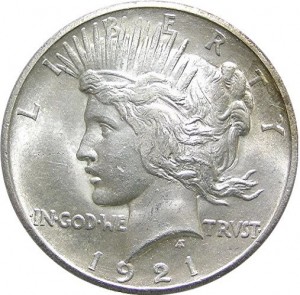
1921-D Peace Dollar
The bill calls for the issue of no more than 500,000 $1 silver coins commemorating the Morgan dollar and the Peace dollar in 2021. If passed, 2021 will mark the 100th anniversary of the end of the Morgan Dollar and the beginning of the Peace Dollar.
Aside from being excited about the issue of the coin, the one line that has caught the interest of collectors is that “it is the sense of Congress that if the Secretary determines it to be feasible and cost effective, the Secretary may mint some of the coins minted under this Act at the Nevada State Museum (formerly a United States Mint facility) located in Carson City, Nevada.”
Although it seems like a good idea, there are a lot of questions whether striking coins in Carson City would be feasible. Since the facility is an active museum, would Nevada be willing to give up a piece of their operations to the federal government? How disruptive would be to the museum’s activities before and after striking the coins?
How would the U.S. Mint strike coins at the museum? While the facility has old coining presses used for demonstrations, they may not be capable of manufacturing modern coinage. Then there is the other equipment involved including an upsetting mill to put an edge on the coin.
The Carson City Mint was built in 1863 to building codes and security standards of the mid-19th century. After the Mint stopped striking circulating coins in 1893, the building became as Assay Office. In 1933, the Great Depression ended its service as an Assay Office. The federal government sold the building to Nevada in 1939. While the Nevada State Museum has updated the building’s security, it is doubtful that it would meet modern U.S. Mint requirements.
Striking coins with the CC mintmark may have an appeal to the collecting community, it might not be feasible and cost-effective.
S. 239: Christa McAuliffe Commemorative Coin Act of 2019
Summary: (Sec. 3) This bill directs the Department of the Treasury to mint and issue not more than 350,000 $1 silver coins in commemoration of Christa McAuliffe, a teacher tragically killed in the Space Shuttle Challenger Disaster.(Sec. 4) The design of the coins shall bear an image and the name of Christa McAuliffe on the obverse side and a design on the reverse side that depicts the legacy of McAuliffe as a teacher.(Sec. 5) Treasury may issue the coins from January 1-December 31, 2021.(Sec. 7) All surcharges received by Treasury from the sale of the coins shall be paid to the FIRST robotics program for the purpose of engaging and inspiring young people, through mentor-based programs, to become leaders in the fields of science, technology, engineering, and mathematics.
Held at the desk. — Jul 10, 2019
Received in the House. — Jul 10, 2019
Message on Senate action sent to the House. — Jul 10, 2019
Passed Senate with amendments by Voice Vote. — Jul 9, 2019
Measure laid before Senate by unanimous consent. — Jul 9, 2019
Senate Committee on Banking, Housing, and Urban Affairs discharged by Unanimous Consent. — Jul 9, 2019
Read twice and referred to the Committee on Banking, Housing, and Urban Affairs. — Jan 28, 2019
The Senate passed the Christa McAuliffe Commemorative Coin Act of 2019 in July. Like the Women’s Suffrage Centennial Commemorative Coin Act (S. 1235) passed in June, the bill is being held at the desk in the House of Representative because of an objection by one of its members.
A source claims that a freshman member of the House has objected to these bills being first passed by the Senate. This member cites Article I Section 7 of the United States Constitution where it says that “All bills for raising revenue shall originate in the House of Representatives.” A spokesperson in the House ’Clerk’s office would not confirm or deny the ’source’s claim.
H.R. 3757: 1921 Silver Dollar Commemorative Coin Act
Referred to the House Committee on Financial Services. — Jul 15, 2019
Jul 23, 2019 | celebration, coins, commemorative, dollar, policy, US Mint

The dual-dated Bicentennial reverse designs are still very popular amontst collectors
The act forbade the striking of silver dollars for five years ending an experiment with the striking of Peace Dollars in 1964. There are rumors that at least one 1964-D Peace exists despite the U.S. Mint’s insistence that all of the coins were melted.
Finally, the act made all coins and currency produced in the United States and specific bank issues as legal tender, which reversed the demonetization of the Trade Dollar in 1867.
The Coinage Act of 1965 marks the dividing line between “classic” and “modern” coinage.
After fifty-four years of modern coinage, there continues to be collectors and dealers who turn up their noses at modern coins.
Although the stories behind many of the classic issues are interesting, modern coins provide a diversity that is meaningful and affordable for the average collector.
The first coin of the modern era that had a public impact was the dual-dated coins with the reverses honoring the nation’s bicentennial. The bicentennial was a two-year celebration preceded by three years of hype and prep. When the coins were released, many people searched their change, looking for the coins. It was the first time in many years that half-dollar and large dollar coins circulated in significant numbers since finding them in change was exciting.

The Susan B. Anthony dollar was less than successful because it was confused with a quarter
The most successful program of the modern era was the 50 State Quarters program. The program started strong with a lot of interest. Unfortunately, a downturn in the economy and the television hucksters overselling the potential value of the series turned away a lot of potential collectors.
As the success of the 50 State Quarters program grew, Congress passed laws to create several other circulating commemoratives. The programs include the Westward Journey Nickels, Abraham Lincon Bicentennial cents, and the Native American $1 coin program using the golden-colored planchets of the Sacagawea dollar.
The modern era saw the return of the commemorative coin programs. Some were very popular, like the 2001 American Buffalo Commemorative Coin and 2014 National Baseball Hall of Fame Commemorative Coin programs. There were less popular coins, but none had flopped as bad as the 2013 Girl Scouts of the USA Centennial Silver Dollar.
Unlike previous commemorative coin laws, modern laws help the U.S. Mint limit the time these coins can remain on sale. It also limits their production to one year.
Finally, the modern era has given us the bullion coin series. It started with the American Silver Eagle program that was created to provide a way for the United States government to sell off silver saved in the Defense National Stockpile. As a result, the U.S. Mint has used the program to experiment with different finishes, including burnished and reverse proof.
Congress passed the Gold Bullion Coin Act of 1985 a few months later after being lobbied by the gold mining interests. This law created the American Eagle Gold Bullion Program.
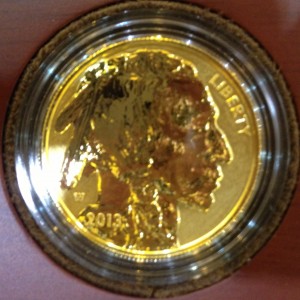
2013-W American Buffalo gold reverse proof obverse
After 54 years there are a lot of exciting choices for the modern collector. And this does not consider the collection of errors or varieties, like the three types of 1972 Eisenhower dollars or the wide versus narrow lettering on the reverse of the 1999 Lincoln cent.
It is past the time for the numismatic community to embrace the collection of modern coins more than it has. There may be few modern coins that are worth thousands of dollars, but they are available to capture the interest of potential collectors. After all, how many of us started collecting by searching pocket change.
Jul 16, 2019 | celebration, coins, commemorative, history
“We choose to go to the moon. We choose to go to the moon in this decade and do the other things, not because they are easy, but because they are hard, because that goal will serve to organize and measure the best of our energies and skills, because that challenge is one that we are willing to accept, one we are unwilling to postpone, and one which we intend to win, and the others, too.”
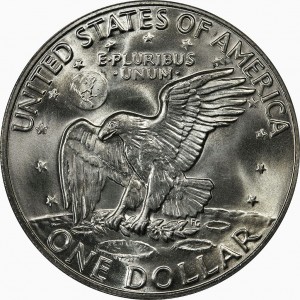
Eisenhower Dollar Reverse featuring the Apollo 11 mission insignia
Kennedy’s vision was accomplished by the Apollo 11 crew of Commander Neil Armstrong, Command Module Pilot Michael Collins, and Lunar Module Pilot Edwin “Buzz” Aldrin along with the thousands of support people on Earth. A little more than eight years after Kennedy made it the nation’s policy, Apollo 11 launched from Cape Kennedy on July 16, 1969.
From within the capsule attached to the top of the Saturn V launch vehicle, a rocket once described as a giant Roman candle, the rocket roared to life to lift the three pioneers into the final frontier. Even though the liftoff occurred at 9:32 AM in Florida, it was watched worldwide regardless of the local time.
Four days later, on Sunday, July 20, 1969, the world held its collective breath as the Lunar Module (LM), call-sign Eagle, was guided to the moon’s Sea of Tranquility and landed at 4:18 PM Central Time. Relief came when Neil Armstrong transmitted a message to Mission Control in Houston:
“Houston, Tranquility Base here. The Eagle has landed.”
CAPCOM (Capsule Communicator) Charles Duke’s response summed up the feel of those of us on Earth as he stumbled a bit at the beginning:
“Roger, Twan– Tranquility, we copy you on the ground. You got a bunch of guys about to turn blue. We’re breathing again. Thanks a lot.”
According to the official schedule, Armstrong and Aldrin were supposed to get five hours of sleep. Realizing that it was unlikely they would be able to sleep, the crew prepared for the first walk on the moon’s surface.
Six and a half hours after landing, after Walter Cronkite and the CBS News team showed models as to how Armstrong will descend from the LM, pull the D-Ring to activate the camera, Armstrong left the LM and went down the latter. He pulled the D-Ring, and the world watched his progress. Just before reaching the surface of the moon, Armstrong uncovered a plaque mounted on the LM that read:
Armstrong looked at the surface and described the moon’s dust as “very fine-grained” and “almost like a powder.” Then with a short jump, he left the bottom rung of the ladder and was standing on the surface of the moon.
“That’s one small step for [a] man, one giant leap for mankind.”
Over the years, there has been a debate about whether Armstrong included the word“a” in the statement. That is not what was heard at the time, and modern examinations of the audio tapes neither confirm or deny the claim. Regardless of what he said, Neil Armstrong was the first man to walk on the surface of the moon, a little more than eight years since President Kennedy said it was his goal.
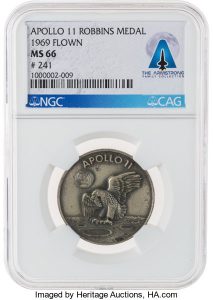
Apollo 11 Flown MS66 NGC Sterling Silver Robbins Medallion, Serial Number 241, from The Armstrong Family Collection (Courtesy of Heritage Auctions)
The practice of carrying Fliteline medals started in 1965 with the flight of Gemini 3, NASA’s first manned mission in the Gemini program. In 1968, the Robbins Company of Attleboro, Mass. was contracted to produce the Fliteline medals starting with Apollo 7.
It is reported that 480 of these 28mm medals were carried aboard Apollo 11.
According to Heritage Auctions, the most paid for a mission flown Robbins Medal was medal #241, a silver medal graded MS66 by NGC, that sold for $112,500 (including buyer’s premium) on November 1, 2018. It was sold with a Statement of Provenance signed by Armstrong’s sons as being once owned by Neil Armstrong. The provenance likely accounts for its high price.
Jul 1, 2019 | coins, commemorative, legislative
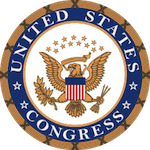 Even while other things were going on, Congress found time to introduce and vote on numismatic-related legislation during the mother of June. The most significant development was the passing of the Women’s Suffrage Centennial Commemorative Coin Act (S. 1235) by unanimous consent.
Even while other things were going on, Congress found time to introduce and vote on numismatic-related legislation during the mother of June. The most significant development was the passing of the Women’s Suffrage Centennial Commemorative Coin Act (S. 1235) by unanimous consent.
If passed by the House of Representatives and signed by the President, the bill would create a commemorative silver dollar in 2020 with a surcharge of $10 per coin that will go to the Smithsonian Institution’s American Women’s History Initiative.
When this bill was sent out of committee to the floor for a vote, the media was all in a twitter (pun intended) about the bipartisan nature of the bill’s support. The bill was introduced on April 30, 2019, by Sen. Marsha Blackburn (R-TN) and cosponsored by every female senator. Subsequently, male senators added their support to where the bill had 82 cosponsors. While we live in very partisan times, those of us who watch numismatic-related legislation understands that these bills are not controversial and tend to gain bipartisan support.
The bill is being held at the desk in the House of Representatives and not assigned to a committee. Although a call to the House did not provide answers, a source says that it is being held for procedural reasons.
According to the source, an objection was made by a member because the member believes that the bill violates the constitution. According to Article I Section 7 of the United States Constitution, it says that “All bills for raising revenue shall originate in the House of Representatives.” Since commemorative coin bills raise revenue for private and public (seigniorage) sources, someone believes that the Senate overstepped its bounds.
There was no report as to who filed the objection.
S. 1235: Women’s Suffrage Centennial Commemorative Coin Act
Held at the desk. — Jun 5, 2019
Received in the House. — Jun 5, 2019
Message on Senate action sent to the House. — Jun 5, 2019
Passed Senate with an amendment by Unanimous Consent. — Jun 4, 2019
Senate Committee on Banking, Housing, and Urban Affairs discharged by Unanimous Consent. — Jun 4, 2019
Read twice and referred to the Committee on Banking, Housing, and Urban Affairs. — Apr 30, 2019
H.R. 3155: 75th Anniversary of the End of World War II Commemorative Coin Act
Summary: This bill directs the Department of the Treasury to mint and issue up to 50,000 $5 coins, 500,000 $1 coins, and 750,000 half-dollar coins in commemoration of the 75th anniversary of the end of World War II.The coins shall be emblematic of the sacrifices made by millions of people of the United States 75 years ago in bringing an end to World War II. The design on each coin shall represent the World War II Victory Medal, which was awarded to all 16 million U.S. military personnel who served from December 7, 1941, to December 31, 1946.The bill requires all sales of such coins include specified surcharges, which shall be paid by Treasury to the congressionally designated National WWII Museum to fund its educational mission of telling the story of the U.S. experience in World War II.
Referred to the House Committee on Financial Services. — Jun 6, 2019
S. 1794: CENTS Act
Read twice and referred to the Committee on Banking, Housing, and Urban Affairs. — Jun 12, 2019
H.R. 3483: To require the Secretary of the Treasury to mint commemorative coins in recognition of the 75th anniversary of the integration of baseball.
Referred to the House Committee on Financial Services. — Jun 25, 2019
S. 1954: A bill to require the Secretary of the Treasury to mint commemorative coins in recognition of the 75th anniversary of the integration of baseball.
Read twice and referred to the Committee on Banking, Housing, and Urban Affairs. — Jun 25, 2019
S. 2042: A bill to require the Secretary of the Treasury to mint coins in commemoration of the National Purple Heart Hall of Honor.
Read twice and referred to the Committee on Banking, Housing, and Urban Affairs. — Jun 27, 2019
Jun 6, 2019 | coins, commemorative, legislative
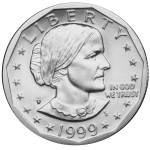 Congress may be filling out the 2020 commemorative coin calendar with the Senate passing the Women’s Suffrage Centennial Commemorative Coin Act (S. 1235). If passed by the House, the bill would require the U.S. Mint to issue a one dollar silver coin to commemorate women suffrage activists in 2020.
Congress may be filling out the 2020 commemorative coin calendar with the Senate passing the Women’s Suffrage Centennial Commemorative Coin Act (S. 1235). If passed by the House, the bill would require the U.S. Mint to issue a one dollar silver coin to commemorate women suffrage activists in 2020.
S. 1235: Women’s Suffrage Centennial Commemorative Coin Act
Passed Senate with an amendment by Unanimous Consent. — Jun 4, 2019
Senate Committee on Banking, Housing, and Urban Affairs discharged by Unanimous Consent. — Jun 4, 2019
Read twice and referred to the Committee on Banking, Housing, and Urban Affairs. — Apr 30, 2019
On August 18, 1920, Tennessee became the 36th state to ratify the 19th Amendment to the U.S. Constitution. Since there were 48 states in the union, 36 represented the three-quarters necessary to ratify the amendment.
S. 1235 was introduced in the Senate by Sen. Marsha Blackburn from Tennessee.
According to the bill the design of the coin is supposed to “contain motifs that honor Susan B. Anthony, Elizabeth Cady Stanton, Carrie Chapman Catt, Harriet Tubman, Mary Church Terrell, Alice Paul, Lide Meriwether, Ida B. Wells, and other suffrage activists of the late 19th century and early 20th centuries.” That is a lot of people to try to fit on a 1½-inch coin.
As with almost every other commemorative coin bill, the silver dollar will have a $10 surcharge. The surcharge will go to the Smithsonian Institution’s American Women’s History Initiative.
This bill does not mention mintage limits. It is possible to become the most produced commemorative coin of the modern era.
Next, the bill is sent to the House of Representatives for their vote.
Jun 3, 2019 | coins, commemorative, legislative, US Mint
 The legislative review is back after taking a month hiatus since there was nothing to report for April.
The legislative review is back after taking a month hiatus since there was nothing to report for April.
Legislation introduced in May is a bit different than others in that only one bill directly affects the section of the law that governs the U.S. Mint (Subchapter III of chapter 51 of title 31, United States Code). Let’s look at each of legislation submitted in May.
S. 1300: National Law Enforcement Museum Commemorative Coin Act
Read twice and referred to the Committee on Banking, Housing, and Urban Affairs. — May 2, 2019
The National Law Enforcement Museum Commemorative Coin Act is a typical three-coin commemorative coin legislation ($5 gold, $1 silver, half-dollar clad) to raise money for a cause. If passed, this law will pay the surcharges to National Law Enforcement Officers Memorial Fund.
H.R. 2559: Gold Reserve Transparency Act of 2019
Referred to the House Committee on Financial Services. — May 7, 2019
The Gold Reserve Transparency Act of 2019 calls for a complete assay, inventory, and audit of gold reserves held by the federal government. The proposed law requires that the location of all gold is documented “including any gold in ‘deep storage,'” the security of those places, and any transactions of that gold.
If enacted, the Comptroller General of the United States do this audit for the past 15 years and have it completed within 12 months and every five years. The law would require the complete audit to be made public with the only exception of the physical security issues.
COMMENTARY: Given the nature of the economy and a lot of other factors are the gold holds that important? The Federal Reserve reports that the M1 money supply is over $3.7 trillion and the M2 is over $14.5 trillion. Think of the M1 as cash used in commerce. The M2 represents all money, including those in savings, securities, or may have circulating restrictions. Even if the government were to account for every grain of gold as reported an in U.S. Mint’s annual reports, that would represent less than 1-percent of the M1.
Gold holdings are irrelevant to the strength of the United States economy. Maintaining the M1 supply is more critical because it is a measure of activity. Economists fear wild tariffs since it will have a direct effect on the M1 money supply. Changes to the M1 will alter the demand for the products produced by the U.S. Mint and Bureau of Engraving and Printing.
H.R. 2558: To define the dollar as a fixed weight of gold.
Referred to the House Committee on Financial Services. — May 7, 2019
H.R. 2558 would require the Secretary of the Treasury “define the dollar in terms of a fixed weight of gold, based on that day’s closing market price of gold” and allow Federal Reserve Notes to be exchangeable for gold at that statutory rate.
COMMENTARY: This is a backhanded attempt to return the United States to the gold standard without the sufficient backing of gold that will support this effort. With the money supply being over $14 trillion, trying to match the amount of gold at market value to every U.S. dollar would cause a devaluation of the currency that it would not be economically viable to do business in or with the United States.
Further, the market price of gold is set by private banks, metals dealers, mining companies, and other financial companies from all over the world through the London Bullion Market Association (LBMA). Given the makeup of their membership, this bill will allow this market that includes people from Bahrain, China, Switzerland, Russia, and other countries where the United States may have disputes to have direct influence over the strength of the U.S. dollar.
The introduction of a bill like this makes for good talking points for a constituency that is ignorant of the ramifications of this law. It is not sound policy given the nature of the markets.
H.R. 2630: Cash Always Should be Honored Act
Referred to the House Committee on Energy and Commerce. — May 9, 2019
The Cash Always Should be Honored (CASH) Act states that “It shall be unlawful for any physical retail establishment to refuse to accept legal tender as payment for any products or services offered for sale by such physical retail establishment.” The bill allows exemptions for online and telephone-based transactions.
COMMENTARY: Although I believe in the power of spending the products of the U.S. Mint and Bureau of Engraving and Printing over using electronic means, it should not be the government’s place to tell anyone how to conduct business.
Another short-sighted bill that does not consider the modern economy because it does not consider changes to the concept of a physical retail establishment. For example, what about mobile-based commerce? Would the rideshare companies be required to take cash? What about the plumber who comes to fix your sink? What about the food truck where you might buy lunch?
For the numismatists, how would this affect dealers at a coin show? Will you be required to carry around a wad of currency to buy coins? Would there be a distinction between the dealer who only sells at shows versus a dealer with a shop who travels to shows?
It is another bill that looks better as part of talking points than its effects on the real economy.
H.R. 2650: Payment Choice Act of 2019
Referred to the House Committee on Financial Services. — May 9, 2019
This Payment Choice Act of 2019 is similar to the CASH Act in that it will prohibit any business from refusing “to accept United States legal tender of cash as payment for goods or services,” post signs saying that the establishment will not accept cash, or charge a higher price for paying in cash. The bill exempts “any goods or services sold to the public by telephone, mail, or internet.”
COMMENTARY: See the commentary for the CASH Act, above.
May 10, 2019 | Australia, coins, commemorative, news
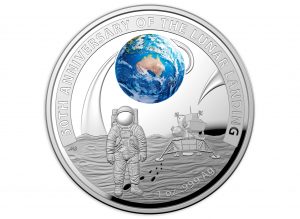 With the pre-sale of the Royal Australian Mint’s 2019 two-coin set honoring the 50th Anniversary of Apollo 11 beginning, a customer service representative from the Mint clarified their shipping policy.
With the pre-sale of the Royal Australian Mint’s 2019 two-coin set honoring the 50th Anniversary of Apollo 11 beginning, a customer service representative from the Mint clarified their shipping policy.
After purchasing the set for AU$177.27 on their website (US$123.96, up 32-cents from yesterday), they charge a flat rate of AU$35.00 (US$22.37) for shipping. Packages are shipped using Auspost eParcel which provides tracking numbers that will be available to users of the U.S. Postal Service’s tracking system.
If there are import fees and taxes, the USPS will collect those from you before delivery.
According to the Royal Australian Mint representative, the 50th Anniversary of the Lunar Landing two Coin Set will not be offered for direct sale in the United States because of licensing agreements. However, that does not affect sales on the secondary market.
Purchasing one set and having it shipped to the United States will cost AU$212.27 (US$148.43) plus surcharges added onto your credit card for the currency exchange.
May 9, 2019 | Australia, coins, commemorative, foreign
While perusing my Twitter feed, I found the announcement from the Royal Australian Mint is beginning the presale of the two-coin set honoring the 50th Anniversary of Apollo 11.
The set features a 2019-S Apollo 11 50th Anniversary Proof Clad Half Dollar and an Australian Silver Proof $5 coin. The two-coin set can be ordered for AU$195.00 in Australia, where the price includes the Goods and Services Tax (GST). Outside of Australia, the price is 177.27 ($123.64 as of May 9, 2019).
The Australian coin has an interesting design. On the obverse, the Royal Australian Mint reduced the size of Queen Elizabeth II’s effigy on the obverse and filled the side with an image of the moon, a radio telescope representing the CSIRO Parkes Observatory, and a part of the transcript of the Apollo 11 mission. The CSIRO Parkes Observatory was one of the ground tracking stations that helped NASA communicate with the Apollo 11 crew.
The reverse features a stylized scene from the moon landing with a color image of the earth positioned in a way to make Australia facing the virtual camera.
The Australian $5 silver coin can only be purchased in this set and has a mintage limit of 10,000 coins. Thus, it is safe to assume that there will be a limit of 10,000 of these sets.
The Royal Australian Mint is selling a version of the silver coin that is plated in nickel and domed like the U.S. coin. The images on the Royal Australian Mint website shows a dark-colored coin that makes the colored image of the earth stand out. This coin also has a limited production of 10,000 coins.
There is also a gold coin and a six-coin uncirculated set that features copper-nickel base coins and aluminum-bromide one- and two-dollar coins. These coins feature different reverse designs than their precious metals counterparts. The obverse features the effigy of Queen Elizabeth II by Ian Rank Bodley.
Coins ordered now will be shipped starting on June 5, 2019.
The Royal Australian Mint has not (yet) provided information if there will be a special program for shipping to the United States or if they will partner with the U.S. Mint to sell the set.
If you are thinking about ordering you might want to watch the currency markets. There has been a decline in the value of the Australian Dollar (AUD) versus the U.S. Dollar since the beginning of April. Although markets are difficult to time, a fluctuation of 5-percent in the prices is not going to make a big difference.
Aside from waiting for answers to my questions from the Royal Australian Mint, I will watch the markets for the next two weeks to see if I can save money if the AUD dips below 60-cents to the USD.
Coin images courtesy of the Royal Australian Mint.
Apr 1, 2019 | coins, commemorative, legislative
 When it comes to numismatic-related legislation, proposing commemorative coin programs can look like a pastime to the members of Congress. At the prompting of constituent groups, members will submit bills that have everyone excited but does not deliver on its promise.
When it comes to numismatic-related legislation, proposing commemorative coin programs can look like a pastime to the members of Congress. At the prompting of constituent groups, members will submit bills that have everyone excited but does not deliver on its promise.
For now, the only commemorative coin program that has become law is the Naismith Memorial Basketball Hall of Fame in 2020.
In March, members of Congress have introduced bills to create five more commemorative coin programs. All have merit but the reality is that most of these bills will not pass Congress.
For the 116th Congress, there have been 16 numismatic-related bills submitted covering 13 different commemoratives (some are introduced in both the House and Senate to increase its chance of passage). One bill, Route 66 Centennial Commission Act (H.R. 66), was added to the watch list because the bill recommends a possible commemorative coin for the celebration.
Maybe there will be something more exciting to report next month.
S. 639: Tomb of the Unknown Soldier Centennial Commemorative Coin Act
Read twice and referred to the Committee on Banking, Housing, and Urban Affairs. — Mar 4, 2019
H.R. 1805: To require the Secretary of the Treasury to mint coins in commemoration of the centennial of the establishment of the Tomb of the Unknown Soldier.
Referred to the House Committee on Financial Services. — Mar 14, 2019
H.R. 1830: To require the Secretary of the Treasury to mint coins in commemoration of the National Purple Heart Hall of Honor.
Referred to the House Committee on Financial Services. — Mar 18, 2019
H.R. 1865: To require the Secretary of the Treasury to mint a coin in commemoration of the opening of the National Law Enforcement Museum in the District of Columbia, and for other purposes.
Referred to the House Committee on Financial Services. — Mar 25, 2019
H.R. 1923: To amend title 31, United States Code, to require the Secretary of the Treasury to mint and issue quarter dollars in commemoration of the Nineteenth Amendment, and for other purposes.
Referred to the House Committee on Financial Services. — Mar 27, 2019
H.R. 1982: To require the Secretary of the Treasury to mint coins in recognition and celebration of the National Women’s Hall of Fame.
Referred to the Committee on Financial Services, and in addition to the Committee on the Budget, for a period to be subsequently determined by the Speaker, in each case for consideration of such provisions as fall within the jurisdiction of the committee concerned. — Mar 28, 2019
 Congress is nothing if not full of shallow people who would pander to their own mothers if it meant winning a vote or two. Their shallowness is on display just before they go on an extended break when members drop bills into the virtual hopper for consideration.
Congress is nothing if not full of shallow people who would pander to their own mothers if it meant winning a vote or two. Their shallowness is on display just before they go on an extended break when members drop bills into the virtual hopper for consideration. → Read more at simplybusiness.co.uk
→ Read more at simplybusiness.co.uk → Read more at cbc.ca
→ Read more at cbc.ca → Read more at bbc.com
→ Read more at bbc.com → Read more at gulfnews.com
→ Read more at gulfnews.com → Read more at fox4kc.com
→ Read more at fox4kc.com → Read more at startribune.com
→ Read more at startribune.com → Read more at hindustantimes.com
→ Read more at hindustantimes.com






 Even while other things were going on, Congress found time to introduce and vote on numismatic-related legislation during the mother of June. The most significant development was the passing of the Women’s Suffrage Centennial Commemorative Coin Act (
Even while other things were going on, Congress found time to introduce and vote on numismatic-related legislation during the mother of June. The most significant development was the passing of the Women’s Suffrage Centennial Commemorative Coin Act (

